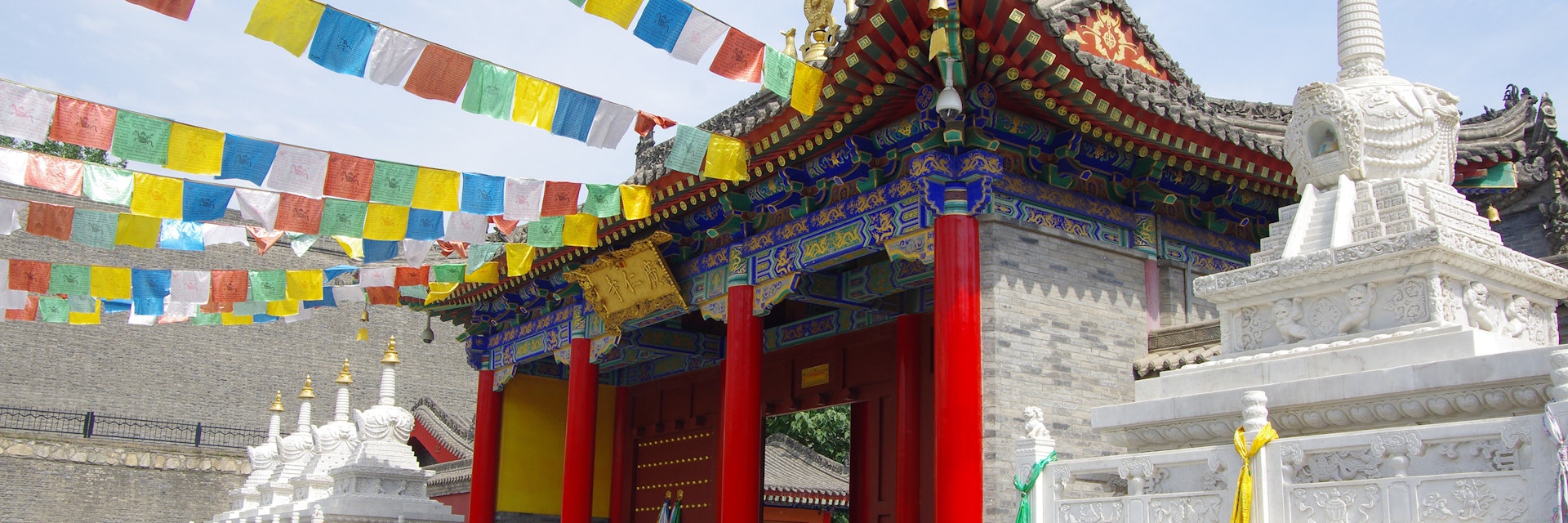The sole Tibetan Buddhist temple in the entire province, Guangren Temple dates from the early 18th century, but was largely rebuilt in the 20th century. As a sacred Tibetan Buddhist place of worship, the temple hums with mystery and spiritual energy. Perhaps the most valuable object in the temple resides in the final hall, a golden representation of Sakyamuni that rests upon a Tang dynasty pedestal. There is only one other like it, housed at the Jokhang Temple in Lhasa.
Upon entering, you are faced by a colossal brick spirit wall ¨C 6m high, 10m long and 1m thick. Of the temple halls beyond, notable shrines include the Hall of the 1000 Hand Guanyin ¨C containing a rather masculine looking multiarmed Goddess of Compassion ¨C and the Permanent Altar Lamp (ÍòÄêµÆ; w¨¤nni¨¢n d¨¥ng), a wick floating in 108 Âᨩ²Ô worth of oil within a protective shelter. The light represents wisdom, and as such is a lamp of knowledge, undying in its brightness.
The Central Hall (Ö÷µî; Zh¨³di¨¤n), surrounded by prayer wheels that you revolve clockwise as you walk clockwise around the hall, houses an effigy of the Bodhisattva Tara (Â̶Èĸ; L¨¸d¨´ M¨³), with attendant statues of Wenshu and Puxian. In other side halls assemble further divinities, including the three-faced U??¨©?a Vijaya (×ðʤ·ðĸ) and the God of Wealth, who stares out from a scene of golden opulence, bottles of Maotai before him.
A further mesmerising spectacle is the Hall of a Thousand Buddhas (ǧ·ðµî; Qi¨¡nf¨® Di¨¤n), with its glittering gold and vermilion interior, and the final hall, the Depository of Buddhist Scriptures (²Ø¾¸ó), containing a huge effigy of Buddha as well as the aforementioned, and highly rare, golden representation of Sakyamuni. A solitary ancient bodhi tree also grows from the temple soil.








